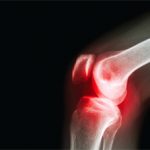 CHICAGO—Many nonsurgical therapies are available for knee osteoarthritis pain, but they vary greatly in effectiveness.
CHICAGO—Many nonsurgical therapies are available for knee osteoarthritis pain, but they vary greatly in effectiveness.
“How should I proceed and figure out what to do with our patients?” asked David T. Felson, MD, MPH, professor of medicine at Boston University School of Medicine, during OA Management Without Surgery in 2018, a session at the 2018 ACR/ARHP Annual Meeting. He also shared tips on how to interpret the effect size of clinical trial meta-analyses to see how available therapies work and compare to each other.
Pain is not patients’ only concern. Between 14% and 26% of patients with knee OA experience periodic knee buckling, and limit activity as a result, he said.1 “I had one patient who couldn’t go down to a basement and had to have her daughter come over to do her laundry,” he said. Her knees buckled when she walked downstairs, “and she was very scared she was going to fall.”
Patients with frequent, bothersome knee buckling should be referred to physical therapy (PT). “I don’t just refer patients to physical therapy. I instruct the physical therapist about exactly what I want.” To address muscle weakness that is the likely cause of the buckling, he prescribes functional closed-chain quadriceps strengthening and balance training. (Note: Chains are links of body parts, such as foot, ankle, knee and hip during walking. In a closed chain, the end of the chain farthest from the body is fixed, such as a squat where your feet are fixed and the rest of the leg chain moves.)
‘I don’t just refer patients to physical therapy. I instruct the physical therapist about exactly what I want.’ —David T. Felson, MD, MPH
Effect Sizes
To accurately interpret clinical trial data on medications for knee pain and other therapies, look at meta-analyses’ effect sizes, and watch for red flags that suggest publication bias, said Dr. Felson. Be skeptical of study results that seem too positive, trials that are not randomized and controlled, very small studies or markedly inconsistent results across studies. Trials with null results may never be published, and trials done in developing countries are overwhelmingly and suspiciously positive, he added.
Effect size in a trial is the average improvement in pain on the treatment minus the average improvement in pain while on placebo, divided by the standard deviation, he said. Dr. Felson offered a simple guide to gauge effect sizes of OA treatments: 0.2 to 0.5 is a small treatment effect, 0.5 to 0.8 is a moderate treatment effect, and 0.8 or greater is a large treatment effect. Total knee replacement surgery trials may have effect sizes of closer to 1.5, he said. Due to a strong placebo response in OA trials, look for effect sizes that show the treatment works better than placebo.

